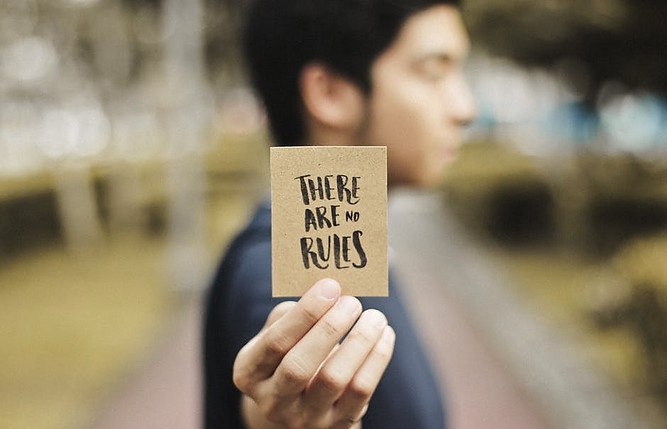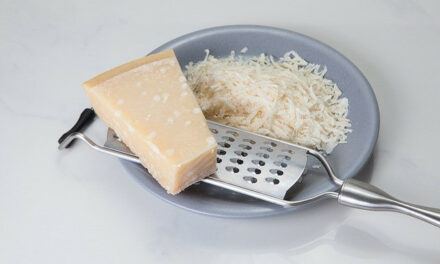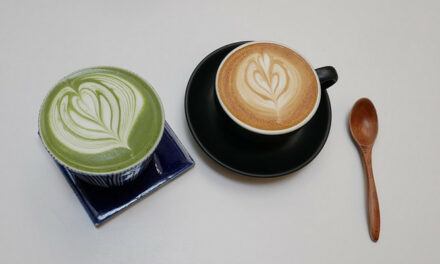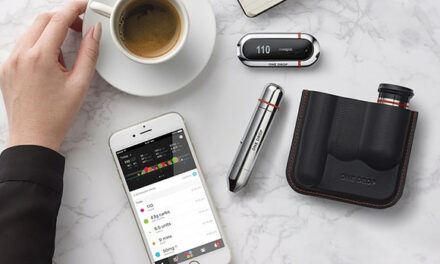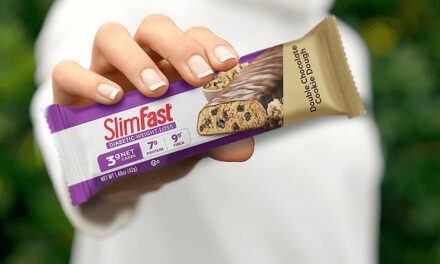Low blood glucose (hypoglycemia) happens when the blood glucose levels fall too low that would demand urgent attention to restore it to a targeted range, it is usually when the level of the blood sugar is below 70mg/dl.
“Rule 15-15” is known as a method for controlling hypoglycemia.
In this article, we shall look at the effectiveness of the “Rule 15-15” in handling hypoglycemia.
In other words, if the rule of 15/15 accurate and does the rule of 15 for Hypoglycemia work as a modern-day blood glucose management strategy.
Let’s cover some background about low blood sugar first.
What is Hypoglycemia?
Hypoglycemia, also known as low blood glucose, is when the blood sugar levels fall low enough that need action to bring them to a target healthy range. This usually happens when the blood sugar is lower than 70mg/dl.
Often, hypoglycemia results from diabetes treatment in patients who are diagnosed with diabetes, Type 1 or Type 2.
Nevertheless, several conditions also can cause hypoglycemia without diabetes in people. Importantly, hypoglycemia itself (without diabetes or another disease) is not considered a ‘disease’, but it indicates there is a health problem.
Hypoglycemia can occur in individuals with diabetes when the body produces a large quantity of Insulin.
The hormone that breaks sugar down so that it can be used as energy in the body is called insulin. A diabetic patient can also get hypoglycemia when he consumes too much insulin.
Hypoglycemia can as well happen in people do not have diabetes when the body cannot stabilize blood sugar level.
Likelihood of a person with no traces of diabetes to experience Hypoglycemia is lower than hypoglycemia that happens in individuals who suffer from diabetes and other related conditions.
Tip: Don’t get caught up with Type 2 Diabetes Myths about Healthy Eating.
Causes of Hypoglycemia
Low blood sugar or hypoglycemia is common with individuals who suffer type 1-diabetes, but can also happen to people who have type 2-diabetes taking certain medications and insulin.
An average person that has diabetes may experience a mild episode of low blood sugar on average up to two times each week.
Here are the leading causes for a hypo episode. (After all, don’t ignore the Root Cause of Your Diabetes)
Ø High Blood Insulin
Too much insulin causes hypoglycemia.
There are five types of insulin.
- Rapid-acting insulin
- Short-acting insulin
- Intermediate-acting insulin
- Mixed insulin
- Long-acting insulin
One of the reasons the current insulin is better than the regular insulin (short-acting insulin) and intermediate-acting insulin (NPH) is that they do not have the tendencies to cause hypoglycemia, especially overnight.
Insulin pumps can also help to reduce the risk of hypoglycemia. Administering the wrong insulin type or directly injecting insulin into the muscles instead of under the skin can enhance the risk of hypoglycemia.
Ø Food
Some of your meals can cause hypoglycemia.
- Consuming food that has lower carbohydrates than the usual without minimizing the intake of insulin
- Meal composition – the level of fat, fibre, the protein contained in any meal can as well affect carbohydrate absorption.
Tip: Here are the Things You Might Not Know About Reactive Hypoglycemia Diet.
Ø Physical activities
There are many benefits to exercise with or without diabetes.
One of the trickiest ideologies is that exercise can lower the level of blood sugar for people with type 1-diabetes in both long and short terms. Almost half of the children in diabetes type 1 study who have time to exercise for an hour in a day experiences hypoglycemia reaction overnight.

The duration, intensity, and timing of exercise can in all increase the risk of hypoglycemia.
Saying so, people with Types 2 diabetes can also experience hypo episodes following exertion.
Tip: You should watch for body temperature fluctuation as a result of exercising too. In the linked article, I explained why.
Hypoglycemia Unawareness
The symptoms of hypoglycemia happen very often when the blood sugar levels drop below 70mg/dl. These symptoms are very unpleasant but are also helpful.
The symptoms could tell that the blood sugar is low and need action to restore it to the normal range.
Hypoglycemia unawareness is when the blood sugar levels of some people read below 70mg/dl without them having any symptoms. This can be dangerous rather than a ‘blessing’.
Many people with hypoglycemia do not know they have to treat it because they do not know when the level of their blood sugar drops. These particular sets of people are being placed on a higher risk for a serious reaction leading to low blood sugar.
Also, people with hypoglycemia unawareness have little chances to see the light of the day should hypoglycemia attacks at night. They need to be more careful and be more conscious of checking on their sugar level more frequently especially before or during or having embarked on any task that is so demanding such as driving or operating a machine.
A constant blood sugar monitor will alert the patients the moment their blood sugar goes down. People with hypoglycemia unawareness will be on the receiving end when they constantly monitor their blood sugar levels.
Tip: Here are the Tips on How to Avoid Nighttime Hypoglycemia.
People Who Are At Risk of Hypoglycemia Unawareness
Hypoglycemia unawareness frequently happens to the following groups of people.
- People who experience low blood sugar episode more often (it makes the patience not to perceive the early signs of hypoglycemia)
- People who have a long-time diabetes
- People who control their diabetes level steadfastly (it increases the risk of hypoglycemia)
Regaining Hypoglycemia Awareness
Salvaging the early signs symptoms of hypoglycemia is obtainable.
The patient should in several weeks to neglect or stay away from mild hypoglycemia. This will help the body to control and also normalize the reaction for low blood sugar levels. This will require the patients to increase their blood sugar level targets. Sometimes it may even amount to a high A1c level, but to regain the awareness of hypoglycemia and be able to feel its symptom is worth the short-term blood sugar levels rise.
Tip: That is why HbA1c Testing is essential.
What is the First Sign of Hypoglycemia?
We can say that hypoglycemia differs from person to person. From mild, more common signs to most severe.
[et_bloom_locked optin_id=optin_3][/et_bloom_locked]
People with Mild Hypoglycemia
Individuals with mild hypoglycemia may notice the following early signs;
Ø hunger,
Ø sweating,
Ø tremor or trembling,
Ø shaking,
Ø heart palpitation,
Ø a pale face,
Ø irregular or rapid heart rate,
Ø blurred vision,
Ø weakness and
Ø dizziness, and then
Ø confusion.
People with Moderate Hypoglycemia
Individuals with more common hypoglycemia may experience the following;
Ø tiredness and weakness,
Ø nervousness and irritability,
Ø poor concentration,
Ø confusion,
Ø tingling in the mouth,
Ø personality changes, and
Ø augmentative or irrational behavior,
Ø coordinating problems.
People with Severe Hypoglycemia
People with most severe hypoglycemia have the following experience;
Ø difficulty in drinking or eating,
Ø loss of consciousness,
Ø seizures, and
Ø coma.
Severe hypoglycemia is very dangerous and can be life-threatening. Often, hypoglycemia could be a sign of diabetes that is poorly managed.
Tip: Here are the Best Glucose Monitors of the year. But, remember, you must, regardless of the type of the glucometer you used, you must check the Accuracy of Your Glucose Meter once a while.
Hypoglycemia and Diabetes
Regular blood sugar test can assist a diabetes patient in preventing hypoglycemia.
Type one and type two diabetes are both involved in insulin problems.
Type 1 diabetes
This occurs when the body is not able to produce insulin because the cell that produces insulin is damaged.
Type 2 diabetes
In this case, the pancreas cannot release sufficient insulin or could also be a process whereby the cells are not responding to insulin properly.
In the two types of diabetes, it’s obvious that the cells do not have sufficient insulin. Type 1 diabetes patients and some of the type 2 diabetes need insulin or other drugs to help control the level of their blood sugar. The blood sugar level may rise higher when the dose administers high, which would undoubtedly lead to hypoglycemia.
Exercise and feeding well are very important in a time like this as avoiding them may lead to hypoglycemia.
Tip: Stick with Reactive Hypoglycemia Diet and Food List.
Prevention of Hypoglycemia
For many people, regular meal planning with complex carbohydrates can help to prevent hypoglycemia.
People who are at the risk of hypoglycemia because of some medical issues should make sure they follow a strict & healthy routine to prevent hypos.
Here is the must list.
Constantly check their blood sugar
Endeavor to check your blood sugar level daily (at least) and also learn how to understand the symptoms.
Tip: Here are Diabetes Symptoms in Men, Women and Children.
Alcohol
Consumption of alcohol without food should be avoided, and the recommended daily intake of alcohol limits should be duly observed.

Exercise
Before exercising, it is appropriate to eat a snack rich in carbohydrate, and it is vital to always remember how your blood sugar level can be impacted by exercise.
Always be ready
In cases of emergency, it is vital to always go along with a candy bar or sugary fruit juice. Let your mates aware of what to do if your ever go ‘hypo’ and try to travel with a friend or family member.
Let people know
It is helpful at this time to intimate family members, friends and colleagues of any person that has the risk of hypoglycemia about their conditions.
Medical ID
Having medical bracelets or ID will always enable emergency services, healthcare providers and others to render very prompt assistance.
What to Do When the Blood Sugar Gets Low?
It is advisable to keep records of the date and time when hypoglycemia occurred, and if possible, the assistance received and then share or relate the experience you had with your doctor to know the right medication to administer.
When blood sugar gets low, the patient is advised to first and foremost drink or eat 15 grams of a fast-acting carbohydrate, like
- 3 to 4 glucose tablets
- 1 glucose gel tube
- 4 to 6 pieces of hard sugar candy
- ½ cup of fruit juice
- 1 cup of skin milk
- ½ cup of sugary soft drink
- 1 tablespoon of honey.
After about 15 minutes of consuming sugar food, the blood sugar should be rechecked, if the blood sugar is still below 70mg/dl, another round of the food listed (above) should be taken again until the blood sugar becomes normal.
Tip: Dario Glucose Meter is considered a ‘smart’ glucometer with full compatibility with smartphones.
Driving for People Experience Hypoglycemia
It is dangerous to drive when one has traces of hypoglycemia.
Drivers who suffer hypoglycemia are advised to pull off the road and check their blood sugar anytime they have hypoglycemia symptoms and immediately eat sugary food.
They are also advised to always keep a sugar source in their case in cases of emergencies.
What is the 15-15 Rule for Hypoglycemia?
The rule 15-15 hypoglycemia is usually a simple way to remember how to handle hypoglycemia.
- The first step of this rule is to check the blood glucose. If the blood glucose is below 70mg/dl, 15grams of fast-acting carbohydrates should be taken immediately.
Examples of such acting carbohydrates were stated above.
- After consuming the 15gram of fast-acting carbohydrates, the patient should wait for 15 minutes before rechecking his blood glucose. If the blood glucose is still below 100mg/dl, the ‘treatment process’ should be repeated.
Several individuals usually tend to consume as much as they can until the time they feel relieved.
This can also, on the other hand, make the blood sugar levels to rise above the normal level. Using the “15-15 rule” approach can assist in preventing this, avoiding high sugar levels.
Does the Rule of 15 for Hypoglycemia Work?
The 15/15 rule is a working standard reference used in treating hypoglycemia.
The 15grams of fast-acting carbohydrates are simple sugar that is absorbed quickly into the bloodstream within 15minutes after consuming them, and it affects the levels of blood glucose.
This rule helps to rescue low blood sugar levels, and it is generally accepted. It is usually an easy way to remember how to treat hypoglycemia which means “eat 15grams of carbohydrates in food form and wait for 15 minutes”.
Although this rule of 15-15 is an acceptable and working method of controlling low blood sugar levels, it must not take the place of advice of a specialist and diabetes care team.

When Would the 15-15 Rule for Hypoglycemia Work?
The 15-15 rule for hypoglycemia works when it is rightly applied.
Some factors decide when this rule will work are below.
Quantity
This includes the level of blood glucose and the body size of the patients. The level of blood glucose determines the number of carbohydrates that will bring it to the targeted level.
The body size of the patients determines the amount of blood that will need glucose, so when the 15gram of carbohydrates is appropriate to both the blood glucose level and the body size of the patient, it will yield a good result.
Quality
Not all carbohydrates would rapidly raise the blood sugar level while some will shoot the blood sugar up almost immediately, others may take a longer time. Therefore, when the right carbohydrate source is selected, and the blood sugar level, as well as the body size of the patient, is in the same proportion of the chosen carbohydrates, then the 15-15 rule will work and achieve a massive result.
When Wouldn’t the 15-15 Rule for Hypoglycemia Work?
The 15-15 rule is a working standard reference used in treating hypoglycemia, but many experienced caregivers choose to individualize the treatment approach. These caregivers believe that the grams of carbohydrates should be based on body weight instead of using 15grams of carbohydrates as a general standard for both adults and children.
They believe that the quantity of carbohydrate it takes to increase blood glucose depends on the size of the individual. The reason is that adults have a higher volume of blood than children, and each gram of carbohydrate will shoot an infant’s blood glucose higher than it will for a matured adult.
Usually, young children do not need up to 15 grams of carbohydrate to control a low blood sugar level. A little child may take 10grams, toddlers 8 grams and infant 6grams.
It is very important to choose the right carbohydrate source when trying to treat low blood glucose. Complex carbohydrate and some foods that have the content of fats and carbohydrates such as chocolate may slow glucose absorption; therefore, such shouldn’t be used.
Also, Rule 15-15 will not work when the patient is unconscious, which means, someone will have to inject him with glucagon. Glucagon is a medicine that increases blood glucose. It is not advisable to give food, insulin or fluids to an unconscious person if done; otherwise, he may be choked.
Conclusion
When hypoglycemia is not properly treated, it can lead to much-complicated health issues. Based on individual uniqueness, differences and situation on the ground, it is necessary to build a more customized way of treating hypoglycemia.
Rule of 15 works, but make sure you are one of the patients in the category that it will work. As noted above, the 15/15 rule is not for everybody.
Tip: Here are the Best Glucose Monitors of the year, while Dario is considering a ‘trendy’ one. After all, A1C Testing is something you can not ignore.
Tip: Don’t forget to add some Diabetes-friendly Essential Oils and Vitamins to your lifestyle.

